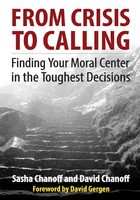Newtonian Organizations in a Quantum Age
For fragmentation is now very widespread, not only throughout society, but also in each individual; and this is leading to a kind of general confusion of the mind, which creates an endless series of problems and interferes with our clarity of perception so seriously as to prevent us from being able to solve most of them … . The notion that all these fragments are separately existent is evidently an illusion, and this illusion cannot do other than lead to endless conflict and confusion.
—David Bohm
I sit in a room without windows, participating in a ritual etched into twentieth-century tribal memory. I have been here thousands of times before, literally. I am in a meeting, trying to solve a problem. Using whatever analytic tool somebody has just read about or been taught at their most recent training experience, we are trying to come to grips with a difficult situation. Perhaps it is poor employee morale or productivity. Or production schedules. Or the redesign of a function. The topic doesn't matter. What matters is how familiar and terrible our process is for coming to terms with the complaint.
The room is adrift in flip-chart paper—clouds of lists, issues, schedules, plans, accountabilities crudely taped to the wall. They crack and rustle, fall loose, and, finally, are pulled off the walls, tightly rolled, and transported to some innocent secretary, who will litter the floor around her desk and peering down from her keyboard, will transcribe them and e-mail them to us. They will appear on our desktops hours or days later, faint specters of commitments and plans, devoid of even the little energy and clarity that sent the original clouds—poof—up onto the wall. They will drift into our calendars and onto individual “to do” lists, lists already fogged with confusion and inertia. Whether they get done or not, they will not solve the problem.
I am weary of the lists we make, the time projections we spin out, the breaking apart and putting back together of problems. It does not work. The lists and charts we make do not capture experience. They only tell of our desire to control a reality that is slippery and evasive and perplexing beyond comprehension. Like bewildered shamans, we perform rituals passed down to us, hoping they will perform miracles. No new wisdom teacher has appeared to show us how to live more wisely in this universe. Our world grows more disturbing and mysterious, our failures to predict and control leer back at us from many places, yet to what else can we turn? If the world is not a machine, then our approaches cannot work. But then, where are we?
The search for new shamans has begun in earnest. Our seventeenth-century organizations are crumbling. We have prided ourselves, in all these centuries since Newton and Descartes, on the triumphs of reason, on the absence of magic. Yet we, like the best magicians of old, have been hooked on manipulation. For three centuries, we've been planning, predicting, and analyzing the world. We've held on to an intense belief in cause and effect. We've raised planning to the highest of priestcrafts and imbued numbers with absolute power. We look to numbers to describe our economic health, our productivity, our physical well-being. We've developed graphs and charts and plans to take us into the future, revering them as ancient mariners did their chart books. Without them, we'd be lost, adrift among the dragons. We have been, after all, no more than sorcerers, the master magicians of our time.
The universe that Sir Isaac Newton described was a seductive place. As the great clock ticked, we grew smart and designed the age of machines. As the pendulum swung with perfect periodicity, it prodded us on to new discoveries. As the Earth circled the sun (just like clockwork), we grew assured of the role of determinism and prediction. We absorbed expectations of regularity into our very beings. And we organized work and knowledge based on our beliefs about this predictable universe.
It is interesting to note just how Newtonian most organizations are. The machine imagery of the cosmos was translated into organizations as an emphasis on material structure and multiple parts. Responsibilities have been organized into functions. People have been organized into roles. Page after page of organizational charts depict the workings of the machine: the number of pieces, what fits where, who the most important pieces are. The 1990s revealed these deeply embedded beliefs about organizations as machines when “reengineering” became the dominant solution for organizational ills. Its costly failures were later acknowledged to have stemmed in large part from processes and beliefs that paid no attention to the human (or living) dimensions of organizational life (see Hammer 1995). William Bygrave, a physicist turned organizational theorist, comments on how many management theorists either were engineers or admired that profession, from Chandler to Porter—a lineage that continues to the present. There has been a close connection, he writes, between their engineering training and their attempts to create a rational, structured approach to organizations (1989, 16).
This reduction into parts and the proliferation of separations has characterized not just organizations, but everything in the Western world during the past three hundred years. We broke knowledge into separate disciplines and subjects, built offices and schools with divided spaces, developed analytic techniques that focus on discrete factors, and even counseled ourselves to act in fragments, to use different “parts” of ourselves in different settings.
In organizations, we focused attention on structure and organizational design, on gathering extensive numerical data, and on making decisions using sophisticated mathematical formulas. We've spent years moving pieces around, building elaborate models, contemplating more variables, creating more precise forms of analysis. Until recently we really believed that we could study the parts, no matter how many of them there were, to arrive at knowledge of the whole. We have reduced and described and separated things into cause and effect, and drawn the world in lines and boxes.
A world based on machine images is a world described by boundaries. In a machine, every piece knows its place. Likewise, in Newtonian organizations, we've drawn boundaries everywhere. We've created roles and accountabilities, specifying lines of authority and limits to responsibilities. We have drawn boundaries around the flow of experience, fragmenting whole networks of interaction into discrete steps. We study variables as separate and well-bounded, even when we attempt to account for some of their interactions through complex statistical techniques. Information is arrayed in two-dimensional charts and graphs that chunk up the world. Charts tell us about market share, employee opinions, customer ratings. We have even come to think of power—an elusive, energetic force if ever there was one—as a bounded resource, defined as “my share of the pie.”
These omnipresent boundaries create a strong sense of solidity; we use them to both protect and define us. Boundaries make it possible to know the difference between one thing and another. “The whole corpus of classical physics,” writes Danah Zohar in The Quantum Self, “and the technology that rests on it is about the separateness of things, about constituent parts and how they influence each other across their separateness” (1990, 69). Classical physics studies a world of things and how influences work across the separations. In a world of things, there are well-defined edges; it is possible to tell where one stops and the other begins, to stand outside something and observe it without interfering. The “thing” view of the world, therefore, has led to a belief in scientific objectivity. And we prospered with this belief for many centuries, working well in a world of you–me, inside–outside, here–thereness.
A vast and complex machine had been entrusted to our care. We searched to know the mind of the clock maker, even as he receded deep into the distance. We made some assumptions about him (gender was never a question). He was infinitely rational, his works were totally predictable, and a few simple laws would reveal what made everything work. Reductionist thinking seduced us into believing that, eventually, we would figure everything out. We would control it all, even life and death. Science displaced God. “Chaos was merely complexity so great,” Briggs and Peat comment, “that in practice scientists couldn't track it, but they were sure that in principle they might one day be able to do so. When that day came there would be no chaos, so to speak, only Newton's laws. It was a spellbinding idea” (1989, 22).
In physics, this search for the ultimate laws has led to work on a unified theory, now dubbed the “theory of everything” (see Davies and Brown 1988). Some scientists still believe they will discover the essential secrets of life and be able to control all aspects of existence. While some in management dream of similar levels of control, their desire for prediction has led to less noteworthy results. True simplicity has been confused with a propensity for simplistic exhortations and mindless aphorisms about what makes for a well-run organization.
It has not been easy living in this machine universe. A mechanical world feels distinctly anti-human. As Zohar eloquently describes it, “Classical physics transmuted the living cosmos of Greek and medieval times, a cosmos filled with purpose and intelligence and driven by the love of God for the benefit of humans, into a dead, clockwork machine. … Things moved because they were fixed and determined; cold silence pervaded the once-teeming heavens. Human beings and their struggles, the whole of consciousness, and life itself were irrelevant to the workings of the vast universal machine” (1990, 18).
The removal of human experience from the scientific world view had one other surprising consequence. Though scientists had engaged in a successful dialogue with nature, as Prigogine and Stengers describe it, an unexpected outcome of their work “was the discovery of a silent world. This is the paradox of classical science. It revealed a dead, passive nature, a nature that behaves as an automaton which, once programmed, continues to follow the rules inscribed in the program. In this sense, the dialogue with nature isolated humans from nature instead of bringing them closer to it … . It seemed that science debased everything it touched” (1984, 6).
Loneliness pervaded not only science, but all Western culture. In America, we raised individualism to its highest expression, each of us protecting our boundaries, asserting our rights, creating a world that, Bellah et al. writes, “leaves the individual suspended in glorious, but terrifying, isolation” (1985, 6).
In science, the beginning of the twentieth century heralded the end of the hegemony of Newtonian thinking. Discoveries of a strange world at the subatomic level could not be explained by Newton's laws, and the path was open for new ways of comprehending the universe. Newtonian mechanics still contribute greatly to scientific advances, but a new and different science is required now to explain many phenomena. Quantum mechanics does not describe a clock-like universe. It tells a very different story:
Most of the other giant steps in our understanding of nature were really evolutionary in that they sprang from previously established foundations: facts were reorganized, or connected in new ways, or seen in a different context. Quantum theory, however, broke away completely from those foundations; it dove right off the end. It could not (cannot) adequately be described in metaphors borrowed from our previous view of reality because many of those metaphors no longer apply. But the net result has not been to obscure reality or make the nature of things more elusive and murky. On the contrary, most physicists would agree that what quantum theory has brought to science is exactly the opposite—concreteness and clarity. (Cole 1985, 106)
Though it may be concrete and clear, the quantum world is weird, even to scientists. Two of its most outstanding theoreticians made strong comments about this. Niels Bohr warns that “Anyone who is not shocked by quantum theory has not understood it.” And Erwin Shroedinger, reacting to some of its puzzles, says, “I don't like it and I'm sorry I ever had anything to do with it” (in Gribbin 1984, 5; frontispiece).
But the quantum world is not just weird and fascinating. As more of us contemplate these strange behaviors at the subatomic level, I believe we are given potent images that can enrich our lives at the macro level. Quantum imagery challenges so many of our basic assumptions, including our understanding of relationships, connectedness, prediction, and control. It may also be true that quantum phenomena apply somewhat to us large-sized objects, literally more than we had thought. Our brain cells “are sensitive enough to register the absorption of a single photon … and thus sensitive enough to be influenced by the whole panoply of odd, quantum-level behavior” writes Zohar (1990, 79). And Wolf notes that “Instead of finding quantum mechanics restricted to ever tinier corners of the universe, we physicists are finding its applicability ever increasing to larger and larger neighborhoods of time and space” (1981, xiv).
Because the quantum world is so strange, its chroniclers reach for new metaphors. Zohar depicts it as “a vast porridge of being where nothing is fixed or measurable … somewhat ghostly and just beyond our grasp” (1990, 27). Capra sees it as “dynamic patterns continually changing into one another—the continuous dance of energy” (1983, 91). Others say that it is a place where “everything is interconnected like a vast network of interference patterns” (in Lincoln 1985, 34). In 1930, astronomer James Jeans created my own favorite image of this new world: “The universe begins to look more like a great thought than like a great machine” (in Capra 1983, 86).
When the world ceased to be a machine, when we began to recognize its dynamic qualities, many familiar aspects of it disappeared. In the work of quantum theorists, “things” disappeared. Although some scientists still conduct a determined search for the basic building blocks of matter, other physicists have abandoned this as a final, futile quest of reductionism. They gave up searching for things finite and discrete because, as they experimented to find elementary particles, they found “things” that changed form and properties as they responded to one another, and to the scientist observing them. “In place of the tiny billiard balls moved around by contact forces,” Zohar writes, “there are what amount to so many patterns of active relationship, electrons and photons, mesons and nucleons that tease us with their elusive double lives as they are now position, now momentum, now particles, now waves, now mass, now energy—and all in response to each other and to the environment” (1990, 98).
In the quantum world, relationships are not just interesting; to many physicists, they are all there is to reality. One physicist, Henry Stapp, describes elementary particles as, “in essence, a set of relationships that reach outward to other things” (in Capra 1983, 81). Particles come into being ephemerally through interactions with other energy sources. We give names to each of these sources—physicists still identify neutrons, electrons, and other particles—but they are “intermediate states in a network of interactions.” Physicists can plot the probability and results of these interactions, but no particle can be drawn independent from the others. What is important in any diagram is the overall process by which elements meet and change; analyzing them for more individual detail is simply not possible (Zukav 1979, 248–50). (See the illustration on page 35.)
In organizations, we are at the edge of this new world of relationships, wondering if the new charts are true, still fearing that if we follow them we will fall off into nothing. A mariner, perched high in the crow's nest, sometimes cries “Land ho” on faith. Knowing what to look for, knowing how hills appear on the horizon, knowing how to tell clouds from land—still, sometimes, the call is an act of faith. Sighting a world of quantum organizations requires such faith. But as we become more familiar with the quantum world, a few of its organizational features emerge from the fog, their outlines just discernible.
image
Particle Interaction—In a moment of time too brief to comprehend, K mesons enter a bubble chamber. As they interact with different energy potentials, twelve different particles appear temporarily. Courtesy of the Lawrence Berkeley Laboratory, University of California.
This world of relationships is rich and complex. Gregory Bateson (1980) speaks of “the pattern that connects” and urges that we stop teaching facts—the “things” of knowledge—and focus, instead, on relationships as the basis for all definitions. With relationships, we give up predictability and open up to potentials. Several years ago, I read that elementary particles were “bundles of potentiality.” I began to think of all of us this way, for surely we are as undefinable, unanalyzable, and bundled with potential as anything in the universe. None of us exists independent of our relationships with others. Different settings and people evoke some qualities from us and leave others dormant. In each of these relationships, we are different, new in some way.
If nothing exists independent of its relationship with others, we can move away from our need to think in terms of separate, polar opposites. For years I had struggled conceptually with a question I thought important: In organizations, which is the more important influence on behavior—the system or the individual? The quantum world answered that question for me with a resounding “Both.” There are no either/ors. There is no need to decide between two things, pretending they are separate. What is critical is the relationship created between two or more elements. Systems influence individuals, and individuals call forth systems. It is the relationship that evokes the present reality. Which potential becomes real depends on the people, the events, and the moment.
Prediction and replication are, therefore, impossible. While this is no doubt unsettling, it certainly makes for a more interesting world. People stop being predictable and become surprising. Each of us is a different person in different places. This doesn't make us inauthentic; it merely makes us quantum. Not only are we fuzzy; the whole universe is.
One source of universal fuzziness comes from the fact that elementary matter is inherently two-faced. It possesses two very different identities. Matter can show up as particles, specific points in space; or it can show up as waves, energy dispersed over a finite area. Matter's total identity (known as a wave packet) includes the potential for both forms—particles and waves. This is the Principle of Complementarity, and at heart, if I may give it a philosophical slant, it speaks of unity expressed as diversity.
However, these two complementary identities of one particle cannot be studied simultaneously as a unified whole. Here, we are thwarted by another major principle of quantum physics, Heisenberg's Uncertainty Principle. We can measure the particle aspect, or the wave aspect—either location or movement—but we can never measure both at the same time: “While we can measure wave properties, or particle properties, the exact properties of the duality must always elude any measurement we might hope to make. The most we can hope to know about any given wave packet is a fuzzy reading of its position and an equally fuzzy reading of its momentum” (Zohar 1990, 27). It is this “vast porridge of being” that sucks in like quicksand all our hopes for a deterministic, quantifiable universe.
These two principles ask us to fundamentally change our relationship to measurement and observation. If quantum matter develops a relationship with the observer and changes to meet his or her expectation, then how can there be scientific objectivity? If the scientist structures an experiment to study wave properties, matter behaves as a wave. If the experimenter wants to study particles, matter obliges and shows up in particle form. The act of observation causes the potentiality of the wave packet to “collapse” into one or the other aspect. One potential becomes realized while the others instantly disappear. Before the observer acts, an endless profusion of possibilities continues to be available. But once the observer chooses what to perceive, “the effect of perception is immediate and dramatic. All of the wave function representing the observed system collapses, except the one part, which actualizes into reality” (Zukav 1979, 79).
Several years ago, organizational theorist Karl Weick called attention to a similar observation dilemma in organizations, what he termed enactment. We participate, he noted, in the creation of our organizational realities: “The environment that the organization worries about is put there by the organization.” Weick's observation, from a social science perspective, displays a sensibility quite similar to that of quantum physicists. There is no objective reality; the environment we experience does not exist “out there.” It is co-created through our acts of observation, what we choose to notice and worry about. If we truly embraced this sensibility in our organizational life, we would no longer waste time arguing about the “objective” features of the environment. Conflicts about what's true and false would disappear in the exploration of multiple perceptions. Weick encourages us to move away from arguing about who's right and who's wrong, and instead to focus our concerns on issues of effectiveness, on reflective questions of what happened, and what actions might have served us better. We could stop arguing about truth and get on with figuring what works best (1979, 152, 168–69).
Weick also suggested a new perspective on organizational analysis. Acting should precede planning, he said, because it is only when we act to implement something that we create the environment. Until we begin this interaction with the environment, how can we formulate our thoughts and plans? In strategic planning, we act as though we are responding to a demand from the environment, but, in fact, Weick argued, we create the environment through our own intentions. Strategies should be “just-in-time … , supported by more investment in general knowledge, a large skill repertoire, the ability to do a quick study, trust in intuitions, and sophistication in cutting losses” (1979, 223, 229).
Weick's understanding of how systems and their environments co-create themselves has been further developed in recent years by a major rethinking of the entire field of strategic planning (see Mintzberg 1993). Many former planning advocates now speak about strategic thinking rather than planning. They emphasize that organizations require new skills. Instead of the ability to analyze and predict, we need to know how to stay acutely aware of what's happening now, and we need to be better, faster learners from what just happened. Agility and intelligence are required to respond to the incessant barrage of frequent, unplanned changes. Jack Welch, legendary CEO of General Electric, says that in this modern world of constant flux, “predicting is less important than reacting” (USA Today).
These shifts in how we think about strategy and planning are important to notice. They expose the fact that for many years and many dollars, we have invested in planning processes derived from Newtonian beliefs. How many companies made significant gains and consistent progress because of elaborate and costly strategic plans? Very few. A quantum perspective provides one powerful explanation for these failures. If there is no objective reality out there, then the environment and our future remain uncreated until we engage with the present. We must interact with the world in order to see what we might create. Through engagement in the moment, we evoke our futures.
This is not a suggestion that organizations exist in a totally reactive state. There is an essential role for organizational intent and identity. Without a clear sense of who they are, and what they are trying to accomplish, organizations get tossed and turned by shifts in their environment. No person or organization can be an effective co-creator with its environment without clarity about who it is intending to become (see Chapter Seven).
So many of the things in organizations that we argue and worry about come from our belief in objective reality. Something is out there, we believe, challenging our skills of analysis and perception. We just have to hire the right experts in order to see it clearly. But this search for discernible, objective futures has been, if we can admit it, a great cosmic joke. We thought we could nail down reality, get it in our sights, or maybe even line up our ducks, but how is that possible in this elusive world of potentials? We've been playing with “vast networks of interference patterns,” with “the continuous dance of energy.” The world is not an independently existing thing. It's a complex, never still, always weaving tapestry.
To live in a quantum world, to weave here and there with ease and grace, we need to change what we do. We need fewer descriptions of tasks and instead learn how to facilitate process. We need to become savvy about how to foster relationships, how to nurture growth and development. All of us need to become better at listening, conversing, respecting one another's uniqueness, because these are essential for strong relationships. The era of the rugged individual has been replaced by the era of the team player. But this is only the beginning. The quantum world has demolished the concept that we are unconnected individuals. More and more relationships are in store for us, out there in the vast web of life.
Even organizational power is purely relational. One evening, I had a long, exploratory talk with a wise friend who told me that “power in organizations is the capacity generated by relationships.” It is an energy that comes into existence through relationships. Ever since that conversation, I have changed what I pay attention to in an organization. Now I look carefully at a workplace's capacity for healthy relationships. Not its organizational form in terms of tasks, functions, span of control, and hierarchies, but things more fundamental to strong relations. Do people know how to listen and speak to each other? To work well with diverse members? Do people have free access to one another throughout the organization? Are they trusted with open information? Do organizational values bring them together or keep them apart? Is collaboration truly honored? Can people speak truthfully to one another?
Because power is energy, it needs to flow through organizations; it cannot be bounded or designated to certain functions or levels. What gives power its charge, positive or negative, is the nature of the relationship. When power is shared in such workplace redesigns as participative management and self-managed teams, positive creative power abounds. For years, many people and researchers have described the positive impacts of these new relationships, power that shows up as significant increases in productivity and personal satisfaction (see Weisbord 1987, Daft and Lengel 1998).
In other workplaces, leaders attempt to force better results through coercion and competition; sometimes they exhibit a flagrant disregard for people and their abilities. In such organizations, a high level of energy is also created, but it's entirely negative. Power becomes a problem, not a capacity. People use their creativity to work against these leaders, or in spite of them; they refuse to contribute positively to the organization.
The learning for all of us seems clear. If power is the capacity generated by our relationships, then we need to be attending to the quality of those relationships. We would do well to ponder the realization that love is the most potent source of power.
The quantum world asks us to contemplate other mysteries as well. It reveals the webs of connection that are everywhere, and tantalizes us with a question: How do influence and change occur within a web? Physicists have observed a level of connectedness among seemingly separate particles, even if separated by huge distances. After 1930, a great debate raged among the premier physicists, especially between Niels Bohr and Albert Einstein. Could matter be affected by “non-local causes”? Could matter be changed by influences that travel faster than the speed of light? Einstein was so repelled at the idea of a universe where cause could happen at a distance that he designed a thought experiment with two other physicists (the EPR experiment) to disprove the whole idea.
His experiment launched a lively debate in physics, and thirty years later, with the debate still raging, physicist John Bell constructed a mathematical proof to show that “instantaneous action-at-a-distance” could occur in the universe. Finally, in 1982 (and subsequently established in many other experiments), French physicist Alain Aspect conducted actual physical experiments proving that elementary particles are, indeed, affected by connections that exist invisibly across time and space (Gribbin 1984, 227ff).
Here is one example of how action-at-a-distance is confirmed. Two electrons are first paired together or correlated. Tests are then conducted to determine whether such paired electrons, even when separated, will continue to act as one unified electron. Will their relationship survive at a distance? To determine whether these electrons behave as one, physicists can test their spin. Electrons spin along an axis, either up and down or side to side. However, being quantum phenomena, these axes do not preexist as objective reality. They exist only as potentials until the scientist decides on which axis to measure. There is no fixed spin to the electron; its spin appears based on what the scientist chooses to test for. The electrons respond to the scientist's choice of measures. (If this is hard to comprehend, remember that the quantum realm is weird even to scientists.) Once two electrons have been paired, if one is observed to spin up, the other will spin down, or if one is observed to spin right, the other will spin left.
In this experiment, the two paired electrons are separated. Theoretically, they could be across the universe. No matter the distance, at the moment one electron is measured for its spin—say that a vertical axis is chosen—the second electron will instantaneously display a vertical, but opposite, spin. How does this second electron, so far away, know which axis was chosen to measure?
Formerly, scientists believed that nothing travels faster than the speed of light, yet these experiments seem to disconfirm that. One explanation that physicists offer is that the two electrons are linked by non-visible connections; they are, in fact, an indivisible whole that cannot be broken into parts, even when separated by space. When an attempt is made to measure them as discrete parts, scientists get stymied by the fact of their invisible connectedness.
In our day-to-day search for order and prediction, we are driven crazy by non-local causality. In spite of the best plans, we experience influences that we can't see or test, and strange occurrences that pop up everywhere. We all have been forced to deal with unintended consequences of our well-intended plans. We thought we were doing something helpful to solve a problem, and suddenly we are confronted with eight new problems created by our initial solution. There is no way to prevent these troubling consequences. We can never do sufficient planning to avoid them, because we can't possibly see all the connections that are truly there. When we take a step or make a decision, we are tugging at webs of relationships that are seldom visible but always present.
We have broken the world into parts and fragments for so long now that we are ill-prepared to see that a different order is moving the whole. According to British physicist David Bohm, “The notion that all these fragments are separately existent is evidently an illusion, and this illusion cannot do other than lead to endless conflict and confusion” (1980, 1). I believe that one of our greatest challenges, after so many centuries of separation and fragmentation, is to discover new ways of thinking and sensing that allow us to comprehend the whole. This is still uncharted territory, and it requires the earnest explorations of many of us (see Chapter Eight).
At present, our most sophisticated way of acknowledging the world's complexity is to build elaborate system maps, which are most often influenced by a quest for predictability. When we create a map—displaying what we think are all the relevant elements and interactions—we hope to be able to manipulate the system for the outcomes we desire. We are thinking like good Newtonians. But what we hope for is not possible. There are no routes back to the safe harbor of prediction—no skilled mariners able to determine a precise course across the quantum ocean. The challenge for us is to see past the innumerable fragments to the whole, stepping back far enough to appreciate how things move and change as a coherent entity. We live in a very fuzzy world, where boundaries have an elusive nature and seldom mean what we expect them to mean. The illusory quality of these boundaries will continue to drive us crazy as long as we focus on trying to specify them in more detail, or to decipher clear lines of cause and effect between concepts that we treat as separate, but which aren't.
There are no familiar ways to think about the levels of interconnectedness that seem to characterize the quantum universe. Instead of a lonely void, with isolated particles moving through it, space appears filled with connections. This is why the metaphors turn to webs and weaving, or to the world as a great thought. Gravity is an everyday example of “action-at-a-distance,” and scientists have created other “fields,” unseen forces that organize space, to explain the connections they observe (see Chapter Three). The more provocative view, expressed in Bohm's work, is that at a level we can't discern, there is an unbroken wholeness. If we could look beneath the surface, we would observe an “implicate order” out of which seemingly discrete events arise (Bohm 1980).
Quantum leaps are an excellent example of quantum interconnectedness. Technically, these leaps are abrupt and discontinuous changes, where an electron jumps from one orbit to another without passing through any intermediate stages. It's in one place and then suddenly it's in another, and there are no transition points en route to mark the journey. Physicists can calculate the probability of a jump occurring, but not precisely when it will take place. What is at work here is a whole system invisibly creating the conditions that suddenly enable it to jump to a new place. Because it is impossible to ever know everything about the whole, it is impossible to ever predict exactly where or when influences will manifest. This is hardly a comforting thought to those of us trying to lead organizations, yet the imagery of quantum leaps more accurately reflects my experience of organizational and societal change than any other.
I know of no better theory to explain the sudden fall of the Berlin Wall, for example. Before that event, there were many small changes going on throughout East Germany, most of which were not visible to anyone beyond their immediate neighborhood. But each small act of defiance or new way of behaving occurred within a whole fabric. Each small act was connected invisibly to all others. The global impact suddenly became visible in those few days when people tore the Wall down. The fall of the Berlin Wall demonstrates the power of “think globally, act locally.” It proves that local actions can have enormous influence on a monstrous system that had resisted all other political attempts to change it. Germany could not be reunified by traditional power politics, or by high-level leaders from powerful nations. It was local actions within the system, combined with many other influences globally, that coalesced into a moment of profound change.
In a web, the potential impact of local actions bears no relationship to their size. When we choose to act locally, we may be wanting to influence the entire system. But we work where we are, with the system that we know, the one we can get our arms around. From a Newtonian perspective, our efforts often seem too small, and we doubt that our actions will make a difference. Or perhaps we hope that our small efforts will contribute incrementally to large-scale change. Step by step, system by system, we aspire to develop enough mass or force to alter the larger system.
But a quantum view explains the success of small efforts quite differently. Acting locally allows us to be inside the movement and flow of the system, participating in all those complex events occurring simultaneously. We are more likely to be sensitive to the dynamics of this system, and thus more effective. However, changes in small places also affect the global system, not through incrementalism, but because every small system participates in an unbroken wholeness. Activities in one part of the whole create effects that appear in distant places. Because of these unseen connections, there is potential value in working anywhere in the system. We never know how our small activities will affect others through the invisible fabric of our connectedness. I have learned that in this exquisitely connected world, it's never a question of “critical mass.” It's always about critical connections.
Those who have used music metaphors to describe working together, especially jazz metaphors, are sensing the nature of this quantum world. This world demands that we be present together, and be willing to improvise. We agree on the melody, tempo, and key, and then we play. We listen carefully, we communicate constantly, and suddenly, there is music, possibilities beyond anything we imagined. The music comes from somewhere else, from a unified whole we have accessed among ourselves, a relationship that transcends our false sense of separateness. When the music appears, we can't help but be amazed and grateful.
My growing sensibility of this quantum world has profoundly affected my practice in organizations. Now I struggle to remain aware of the system as a system and to give up my well-trained abilities to reduce and separate things as the route to understanding. I concentrate much more on processes now, focusing on qualities rather than quantities, paying more attention to things like pattern, direction, feel, and the internal rhythm of what's happening. Long ago I gave up looking for straightforward cause and effect. I feel similarly that positioning things as polarities doesn't help—we need to stop drawing lines of opposition and try to understand the “and” of one and one.
I don't personally spend time anymore on elaborate plans or time lines. I want to use the time formerly spent on detailed planning and analysis to create the organizational conditions for people to set a clear intent, to agree on how they are going to work together, and then practice to become better observers, learners, and colleagues as they co-create with their environment. And I have learned that great things are possible when we increase participation. I always want more people, from more diverse functions and places, to be there. I am always surprised by what people can create as they explore the webs of relation and caring that connect them. Finally, I no longer argue about what is real. We each construct reality, and when I become curious about this, I learn a great deal from other people. I expect them to see things differently from me, to surprise me.
Underlying each of these changes in practice is a profound change in sensibility—I have given up trying to control anything. It has taken me a long while to learn this, but I finally understand that the universe refuses to cooperate with my desire to play God.
Sometimes I receive calls from consultant friends who are deep into a project and very frustrated. In one such call, a friend reported that his client organization had collected data, defined five key problem areas, and created task forces to solve each of those issues. Yet the managers were having problems coordinating the task forces. The longer the task forces studied the issues, the more they were seeing the problems as interrelated. Threads of interconnections were everywhere, yet the five groups were still acting separately from one another. The result was fatigue and impatience. People simply wanted to get on with implementing something; anything would be a relief after so many deadening meetings and detailed plans.
As I listened to my colleague, I shared his “Newtonian despair.” I knew what he was feeling; I knew where things were headed if he continued to pursue these separate activities. We talked for some time about bringing the whole system together to access a deeper system's intelligence, but he was struggling to believe that this would help. He wanted to respond in new ways, but lacked a richer vision of what to do, of how to be in this world with greater trust. I wanted to be much more helpful, but in that moment, I failed him. I couldn't adequately convey the strangeness and beauty of this world, or help him believe enough in its inherent orderliness. These were things that I was only beginning to discover myself.
I felt as Heisenberg must have, when he walked those streets at dawn, begging for new insights into the universe. I, too, can feel the ground shaking. Many of us hear its deep rumblings. Any moment now, the earth will crack open and we will stare into its dark center. Into that smoking caldera, we will be asked to throw most of what we have treasured, most of the techniques and tools that have made us feel competent. We know what we must do. And when we finally step forward to do it, when we have made our sacrificial offerings to the gods of understanding, then the ruptures will cease. Healing waters will cover the land, giving birth to new life, burying forever the ancient, rusting machines of our past understandings. And on these waters we will set sail to places we now can only imagine. There we will be blessed with new visions and new magic. We will feel once again like creative participants in this mysterious world. But for now, we wait. An act of faith. Land ho.















